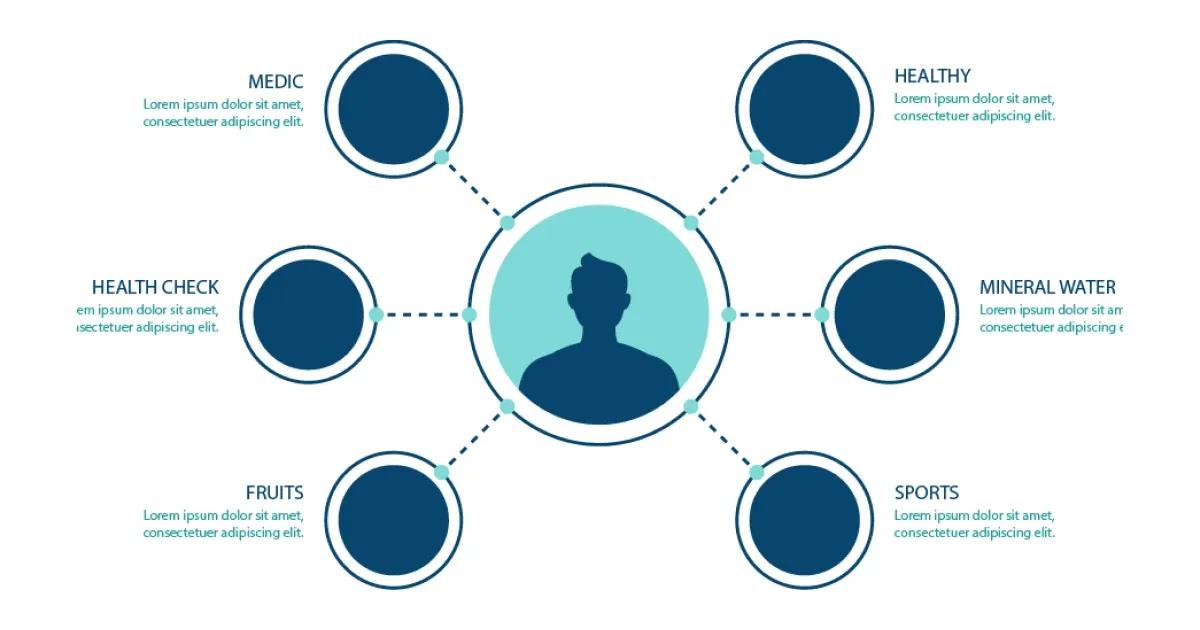When you embark on a journey to explore a new concept or present an innovative idea, one of the first steps you encounter is writing a concept paper. This document serves as a roadmap, guiding you through the process of articulating your thoughts and objectives.
In this comprehensive guide, we will walk you through the seven crucial steps to craft an effective concept paper. From defining your purpose to seeking feedback and revisions, we'll cover it all. So, let's dive in!
ᴀᴅᴠᴇʀᴛɪsᴇᴍᴇɴᴛ
Why Is a Concept Paper Important?
Now that we understand what a concept paper is, let's explore why it holds such significance. A well-crafted concept paper:
Saves Time and Resources: Writing a concept paper allows you to assess the feasibility and relevance of your idea before investing significant time and resources in a full-fledged project. It acts as a filter, ensuring that only viable concepts move forward.
Clarity of Purpose: It helps you define your objectives clearly and ensures that everyone involved understands the concept's essence. This clarity aligns stakeholders and minimizes confusion.
Attracts Support: Whether you're seeking approval, funding, or collaboration, a compelling concept paper can pique the interest of potential stakeholders. It's your first opportunity to make a persuasive case for your idea.
Guides Your Work: It serves as a roadmap throughout your project or research, helping you stay on track and focused on your initial goals. It reminds you of the purpose behind your efforts, preventing distractions.
ᴀᴅᴠᴇʀᴛɪsᴇᴍᴇɴᴛ
Step 1: Define Your Purpose

Clarify Your Objectives
To begin your journey, you must first clarify your objectives. What do you aim to achieve with your concept paper? Are you seeking funding, approval, or feedback? Define your purpose with crystal clarity. It will serve as your North Star throughout the concept paper writing process.
Before you can clearly define your objectives, consider asking yourself:
- What problem does your concept address?
- What are the expected outcomes or benefits?
- Who will benefit from your concept?
Your answers to these questions will help you establish your objectives effectively.
Identify Your Audience
Every piece of writing has an audience, and a concept paper is no exception. Identify who your target audience is. Is it a board of directors, potential investors, or your academic peers? Tailor your concept paper to resonate with the specific group you intend to address.
Understanding your audience is essential for crafting a concept paper that speaks directly to their interests and concerns. Consider their level of expertise in the subject matter and their expectations from your paper. Adjust your language, tone, and content accordingly.
Step 2: Choose a Topic

Selecting a Relevant and Engaging Concept
Your choice of topic can make or break your concept paper. Select a concept that is not only relevant but also engaging. Think about the problems it can solve, the questions it can answer, or the innovations it can bring. Ensure that your chosen concept resonates with your objectives.
When selecting a concept, follow these guidelines:
-
Relevance: Ensure your concept addresses a real and pressing issue. It should align with the goals of your organization or the objectives of your research.
-
Originality: While your concept can build upon existing ideas, it should offer a unique perspective or solution. Avoid rehashing well-trodden paths.
-
Feasibility: Assess whether your concept is feasible within the constraints of your project, budget, and timeline. A great concept that is impossible to execute won't be effective.
Narrowing Down Your Focus
Once you have a broad concept in mind, it's time to narrow down your focus. Consider the scope of your concept paper. Is it feasible to cover all aspects of your concept, or should you focus on a specific angle? Narrowing your focus ensures that your paper remains concise and impactful.
Narrowing down your focus involves:
-
Defining Boundaries: Clearly outline what your concept encompasses and what it excludes. This helps prevent scope creep and keeps your paper focused.
-
Identifying Key Components: Highlight the essential elements of your concept that you must discuss in your paper. These components should align with your objectives.
-
Prioritizing Information: Determine which information is crucial and which is supplementary. Focus on the critical aspects to maintain a clear and concise narrative.
ᴀᴅᴠᴇʀᴛɪsᴇᴍᴇɴᴛ
Step 3: Research and Gather Information

Conducting Preliminary Research
Research forms the backbone of any concept paper. Dive into the literature related to your chosen concept. Explore existing theories, studies, and relevant data. This preliminary research will help you understand the landscape and provide a solid foundation for your paper.
Preliminary research involves:
-
Literature Review: Conduct a thorough review of existing literature to understand the current state of knowledge in your chosen area.
-
Identifying Gaps: Identify gaps in the existing research or knowledge that your concept can fill. This will strengthen your case for its relevance.
-
Citing Sources: Keep meticulous records of the sources you consult. Accurate citations are crucial for establishing credibility.
Gathering Data and Supporting Evidence
In addition to existing research, you may need to gather new data or evidence to support your concept. Whether it's through surveys, experiments, or interviews, ensure that you have credible sources to back your claims. The strength of your concept paper often hinges on the quality of your supporting evidence.
When gathering data and evidence:
-
Use Multiple Sources: Rely on a variety of sources to strengthen your argument. This could include academic papers, expert interviews, statistical data, and case studies.
-
Maintain Objectivity: Present your data objectively and without bias. Transparency in your research methods is crucial.
-
Ensure Relevance: Make sure that the data and evidence you collect directly support the key points you want to make in your concept paper.
Step 4: Create an Outline

Organizing Your Thoughts
With a wealth of information at your disposal, it's time to organize your thoughts. Create an outline that outlines the structure of your concept paper. Consider the key sections: introduction, main body, and conclusion. Break down the content you want to include in each section.
Creating an outline involves:
-
Prioritizing Information: Determine the order in which you'll present your ideas. Start with the most important points and work your way down.
-
Logical Flow: Ensure that your outline follows a logical flow of ideas. Each section should naturally lead to the next, creating a coherent narrative.
-
Headings and Subheadings: Use headings and subheadings to further organize your content within each section. This makes your paper more reader-friendly.
Structuring Your Concept Paper
The structure of your concept paper should be logical and easy to follow. Start with a captivating introduction that hooks your readers. Then, in the main body, delve deep into the details of your concept, providing explanations, examples, and evidence. Finally, conclude by summarizing the key points and reiterating your purpose.
Structuring your concept paper involves:
-
Introduction: Craft an engaging introduction that not only introduces your concept but also captures the reader's interest. Use a hook, provide context, and clearly state your objectives.
-
Main Body: Divide the main body into sections, each addressing a specific aspect of your concept. Use clear transitions to guide readers through your arguments.
-
Conclusion: In the conclusion, summarize the key takeaways from your concept paper. Emphasize the significance of your concept and how it aligns with your objectives. End with a strong closing statement that leaves a lasting impression on your readers.
ᴀᴅᴠᴇʀᴛɪsᴇᴍᴇɴᴛ
Step 5: Writing the Concept Paper

Introduction: Captivating Your Readers
Your introduction sets the tone for your concept paper. Craft it carefully to capture the attention of your readers. Start with a compelling hook, provide context for your concept, and clearly state your objectives. A well-written introduction can make your concept paper memorable.
When writing the introduction:
-
Hook Your Readers: Use a compelling anecdote, a thought-provoking question, or a surprising statistic to grab your readers' attention from the start.
-
Contextualize Your Concept: Provide background information to help readers understand the context and importance of your concept. Explain why it's relevant and timely.
-
State Clear Objectives: Be explicit about the objectives you aim to achieve with your concept paper. This helps set expectations for your readers.
Main Body: Explaining Your Concept
In the main body of your concept paper, you'll need to explain your concept in detail. Use clear and concise language to describe the concept, its significance, and how it addresses the identified problem or question. Support your explanations with evidence and examples to make your points more persuasive.
When writing the main body:
- Clearly Define Your Concept: Begin by providing a clear and concise definition of your concept. Avoid jargon or overly complex language; strive for clarity.
- Explain Significance: Detail why your concept is important. What problems or challenges does it solve? How does it contribute to the field or the organization's goals?
- Provide Evidence: Back your claims with credible evidence. Cite relevant studies, data, or expert opinions to support your arguments.
- Address Potential Concerns: Acknowledge and address any potential concerns or objections that readers may have about your concept. Demonstrating that you've considered these factors builds credibility.
Conclusion: Summarizing Key Points
In the conclusion, you have the opportunity to leave a lasting impression on your readers. Summarize the key points of your concept paper, emphasizing the significance of your concept and how it aligns with your objectives. Reiterate the call to action or the desired outcome.
When writing the conclusion:
-
Summarize Concisely: Summarize the main points of your concept paper succinctly. Avoid introducing new information in the conclusion.
-
Highlight Impact: Emphasize the impact and benefits of your concept. Clearly state how it can address the identified problem or contribute to the field.
-
Call to Action: Encourage readers to take the desired action, whether it's further discussion, funding support, or project implementation.
ᴀᴅᴠᴇʀᴛɪsᴇᴍᴇɴᴛ
Step 6: Editing and Proofreading

Importance of Proofreading
Editing and proofreading are non-negotiable steps in the concept paper writing process. Typos, grammar errors, and inconsistencies can detract from the professionalism of your paper. Take the time to thoroughly edit and proofread your work or consider seeking assistance from a professional editor.
The importance of proofreading cannot be overstated. It ensures that your concept paper is error-free, clear, and polished. It also demonstrates your commitment to producing high-quality work.
Using a Grammar Checker Tool
One invaluable tool for proofreading is the CopyChecker's grammar checker tool. These tools use advanced algorithms to identify and correct grammar and spelling errors. They also offer suggestions for improving sentence structure and clarity, ensuring that your concept paper is polished and error-free.
-
Time Efficiency: They expedite the proofreading process, saving you time and effort.
-
Enhanced Clarity: They suggest improvements to sentence structure and wording, helping you convey your ideas more effectively.
-
Error Prevention: They catch errors that may go unnoticed by the human eye, ensuring a higher level of accuracy.
Step 7: Seek Feedback and Revise

Getting Input from Peers or Experts
Once you've edited and proofread your concept paper, it's time to seek feedback. Share your paper with peers, mentors, or experts in your field. Their insights can provide valuable perspectives and help you refine your paper further.
When seeking feedback:
- Choose the Right Audience: Select individuals who are knowledgeable in your subject matter and can offer constructive feedback.
- Ask Specific Questions: Guide your reviewers by asking specific questions about areas you want them to focus on, such as clarity, organization, or argument strength.
- Be Open to Criticism: Be receptive to both positive feedback and constructive criticism. Remember that the goal is to improve your concept paper.
Making Revisions Based on Feedback
Be open to constructive criticism and be prepared to make revisions based on the feedback you receive. This collaborative approach can result in a stronger and more polished concept paper.
When making revisions:
- Prioritize Feedback: Address the most critical feedback first. Focus on areas where improvements will have the most significant impact on your concept paper.
- Maintain Clarity: Ensure that your revisions enhance the clarity and coherence of your paper. Your goal is to make it as accessible as possible to your target audience.
- Maintain a Unified Voice: While incorporating feedback, ensure that your concept paper maintains a consistent voice and style throughout.
FAQs
What is a Concept Paper?
A concept paper is a concise document that outlines a particular concept or idea. It serves as a preliminary proposal, providing a clear and structured explanation of the concept's significance, objectives, and potential impact.
How to Write a Nursing Concept Analysis Paper?
Writing a nursing concept analysis paper involves a systematic examination of a specific nursing concept, such as pain management or patient empowerment. Start by selecting a well-defined nursing concept, then review relevant literature, identify key attributes and characteristics of the concept, and create a clear conceptual framework.
How to Write a Concept Analysis Paper?
Writing a concept analysis paper, regardless of the field, follows a structured approach. Begin by selecting a concept of interest and conducting a comprehensive literature review. Define the concept, identify its attributes, antecedents, and consequences, and develop a conceptual model or framework.
What are the Key Components of a Concept Paper?
A concept paper typically consists of several key components, including the introduction, background or literature review, statement of the problem or purpose, conceptual framework, methodology (if applicable), main body, conclusion, and references.
How Can I Ensure Clarity and Conciseness in a Concept Paper?
Clarity and conciseness are essential in a concept paper. To achieve this, focus on using straightforward language, avoid unnecessary jargon, and provide clear explanations. Be concise in your writing, eliminating redundancy and ensuring that each sentence contributes to the overall understanding of the concept.
ᴀᴅᴠᴇʀᴛɪsᴇᴍᴇɴᴛ
Conclusion
In conclusion, writing a concept paper is a crucial step in bringing your innovative ideas to life. It serves as a powerful tool to communicate your vision, secure support, and guide your project's development. By following the seven steps outlined in this guide and leveraging tools like grammar checkers, you can create a concept paper that captivates your audience and sets you on the path to success.
Remember, the value of a well-written concept paper cannot be overstated. So, go ahead, put your thoughts into words, and watch your concepts come to life. Your journey of research or project development starts here.







